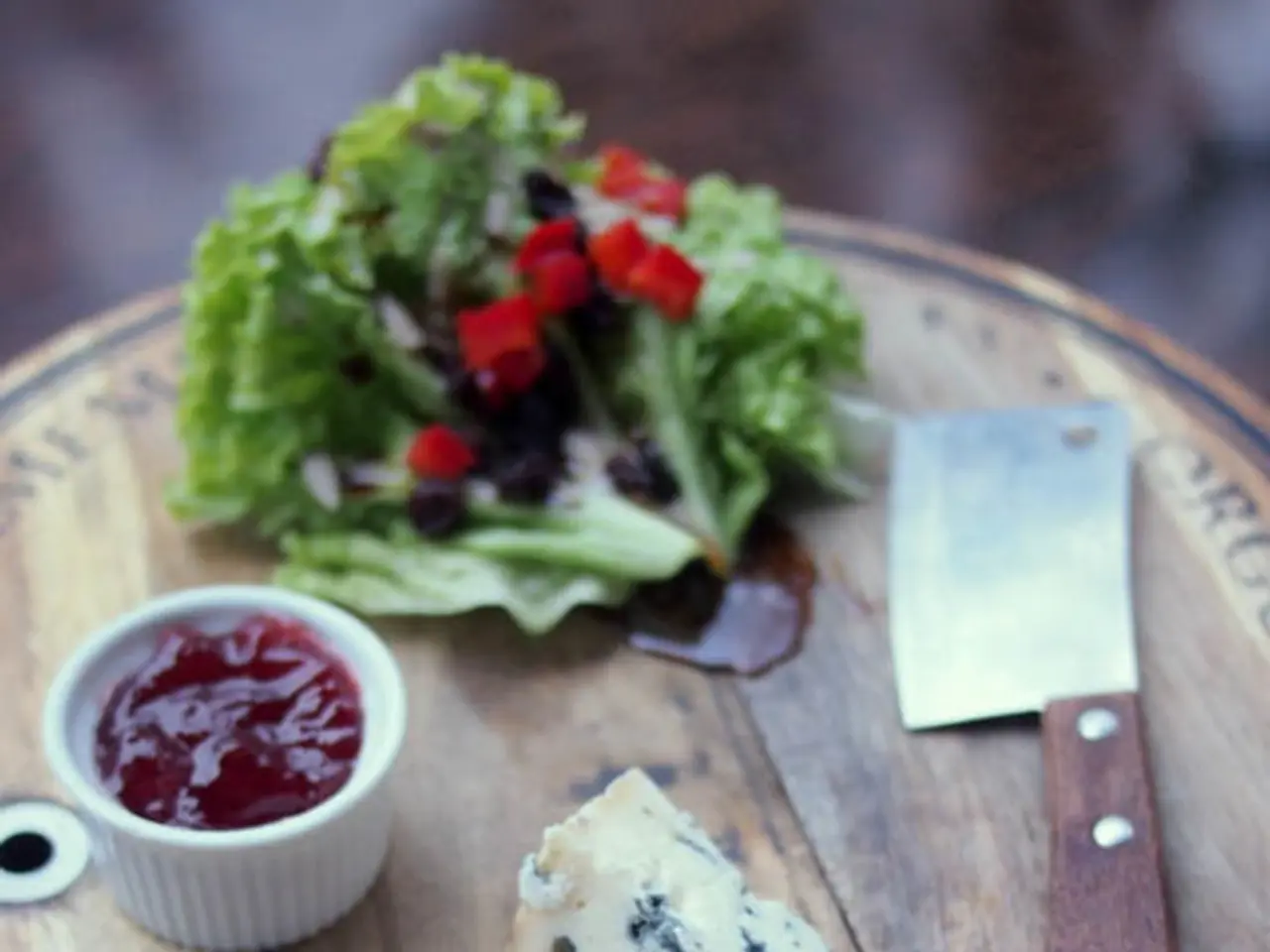Which Material is Best for a Chopping Board: Plastic or Wood? A Definitive Choice, Yet a Valid Point for Retaining Both
In the realm of kitchen essentials, the debate between wooden and plastic cutting boards has been a long-standing one. Each has its own advantages and disadvantages, and the choice often depends on the task at hand.
Many professional chefs and kitchen experts, such as Jamie Oliver and Alton Brown, favor wooden cutting boards due to their knife-friendly properties, longevity, and antibacterial qualities compared to plastic. Wooden boards are preferred for cutting vegetables and cooked meats because they are stable and gentle on knives, extending the life of your precious kitchen tools.
For instance, Hasegawa boards, designed for professional chefs, feature a lightweight wood core, a soft rubber-like surface, and resistance to bacteria. Hinoki, or Japanese cypress, is another popular choice among chefs for its subtle, natural fragrance, mild antibacterial properties, and durability. Paulownia boards, known for their lightweight nature and soft grain, are favored by sushi chefs and those doing delicate knife work.
On the other hand, plastic cutting boards have their own set of advantages. They can be thrown in the dishwasher, a feature that many commercial kitchens and professional chefs appreciate due to their ability to be cleaned and sterilized efficiently. However, it's important to note that plastic cutting boards have been said to leave trace amounts of microplastics in food, a concern that has been raised by various studies.
Moreover, plastic cutting boards develop bacteria-friendly knicks more easily, unlike their wooden counterparts. Wooden cutting boards, on the other hand, have natural antibacterial properties.
When it comes to eco-friendliness, bamboo boards are a tough, renewable option that is strong, scratch-resistant, and less likely to warp than many woods. The Continenta cutting board from Japanese Knife Company, for example, is made of end-grain rubber wood and has attached drawers for easy transfer of chopped vegetables to the frying pan, making it a practical choice for busy kitchens.
Quinton Middleton, the artisan behind bespoke, hand-made chefs knives at Middleton Made Knives in Saint Stephen, South Carolina, prefers wooden chopping boards for longevity of kitchen materials and less chance of particles getting in food.
Knowing how to care for a wooden cutting board is more nuanced than caring for a plastic one. When cleaning a wooden cutting board, it should be washed by hand with warm, soapy water, wiped immediately, and dried. Avoid soaking or putting in the dishwasher. Oil wooden cutting boards monthly with food-grade mineral oil to maintain their condition.
In terms of aesthetic appeal, wooden cutting boards can add a visually pleasing texture to a kitchen space. Acacia wood cutting boards, like the one from Le Creuset, are stylish and have a juice ridge for easier cleaning, making them a good choice for indoor and outdoor entertaining.
Ultimately, the choice between wooden and plastic cutting boards boils down to personal preference, kitchen needs, and the care one is willing to invest. Whether you're a professional chef or a home cook, there's a cutting board out there that suits your needs perfectly.







